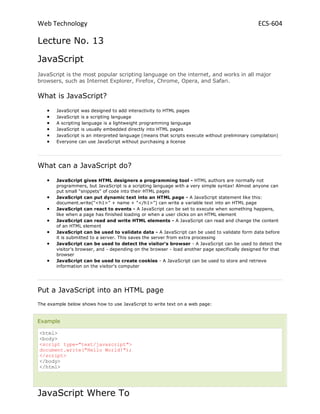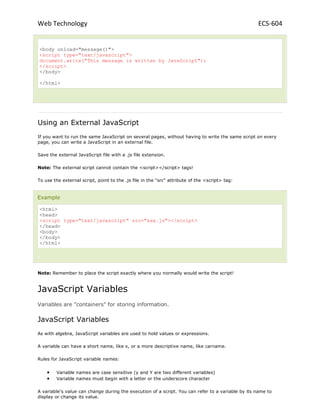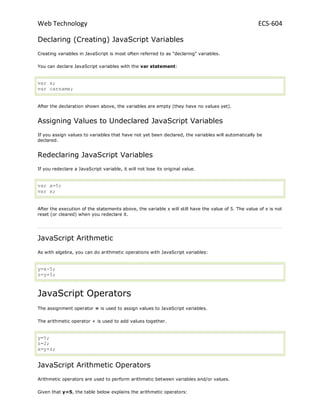JavaScript is the most popular scripting language used on web pages. It can be used to add interactivity and dynamic content to HTML pages. JavaScript code can be embedded directly in HTML pages or stored externally in .js files. JavaScript code can be placed in the <head> or <body> sections of an HTML page. Common JavaScript statements include conditional statements like if/else, loops like for and while loops, and functions. JavaScript also provides popup boxes like alert, confirm, and prompt to interact with users.











